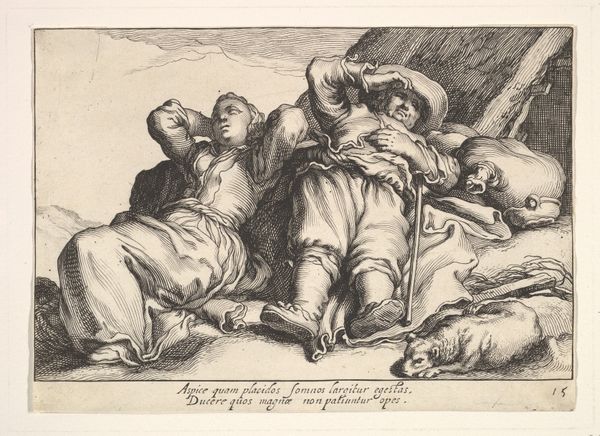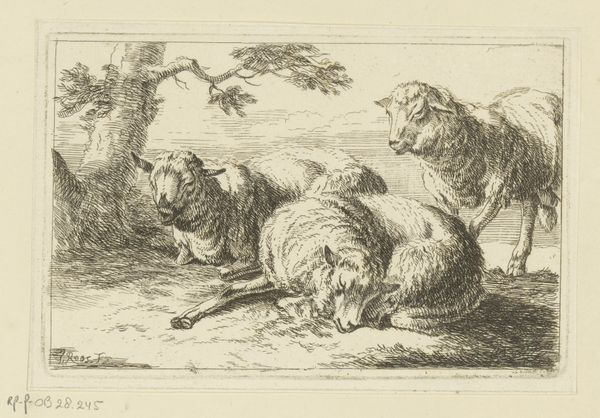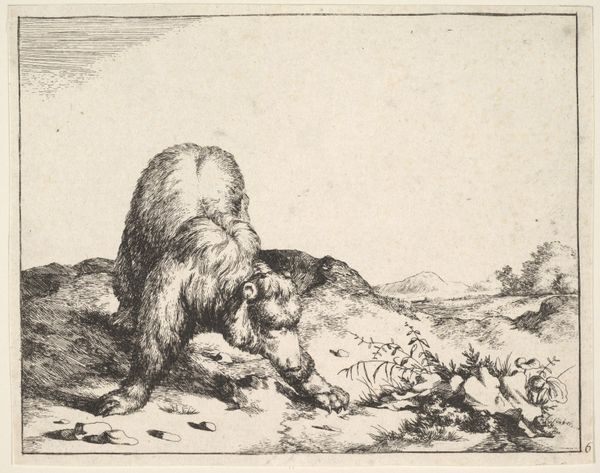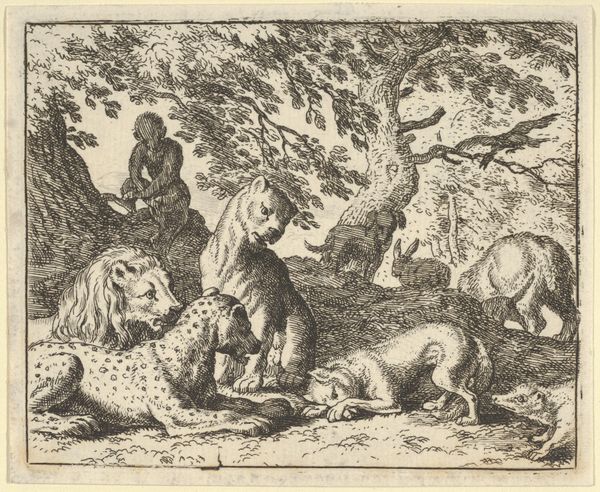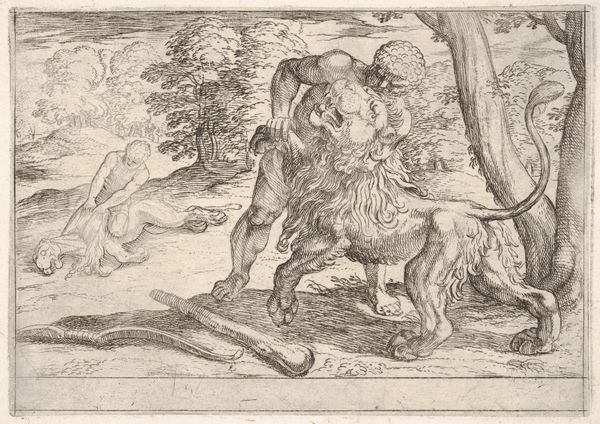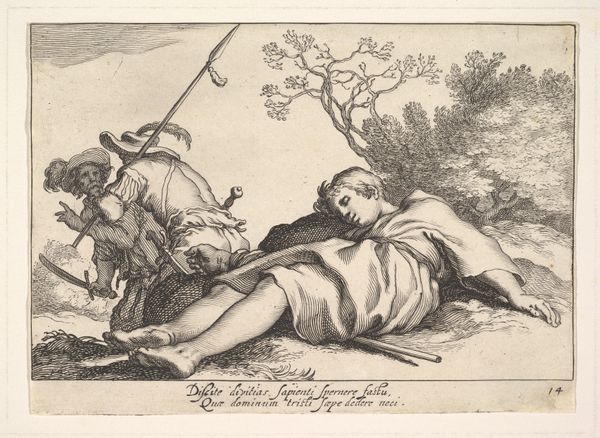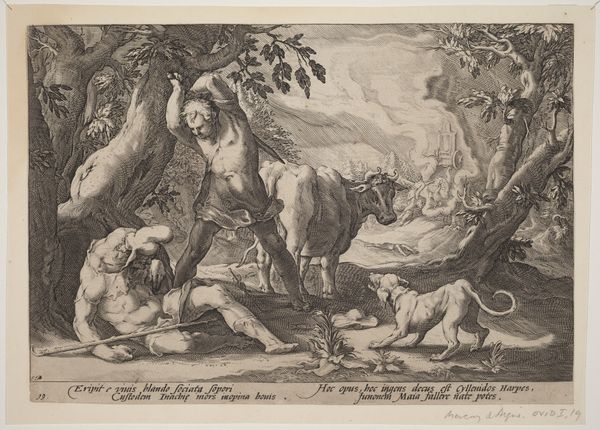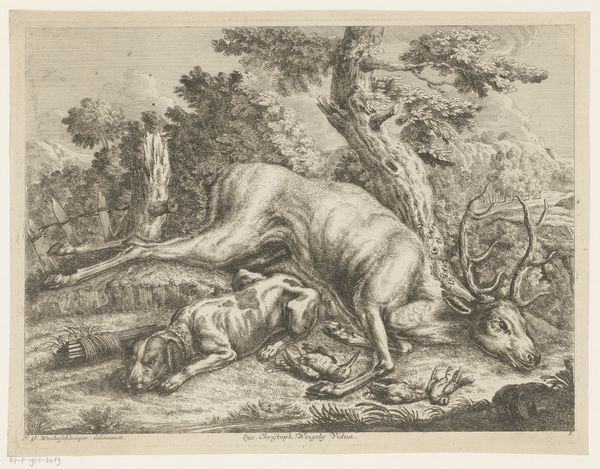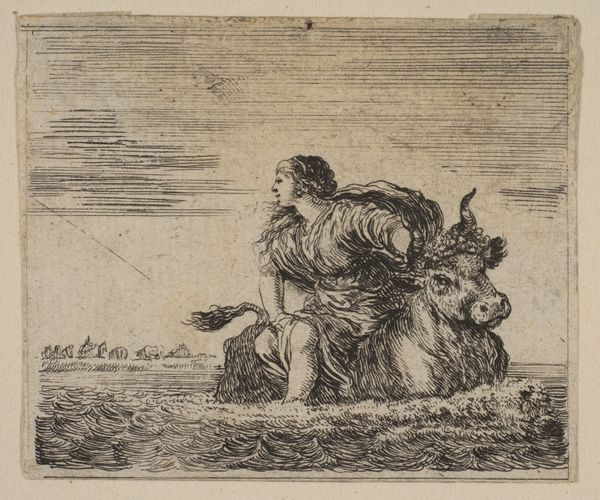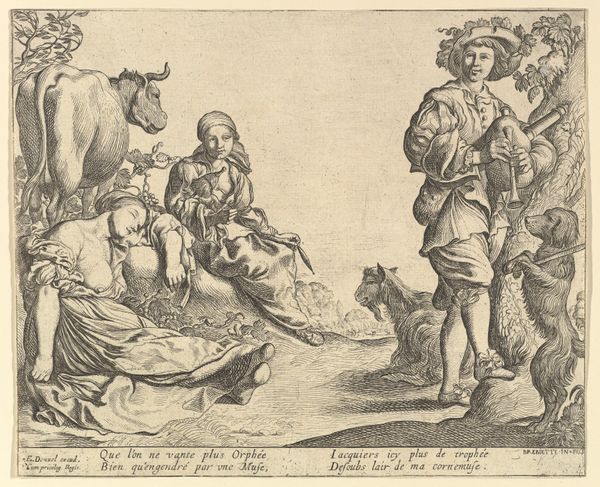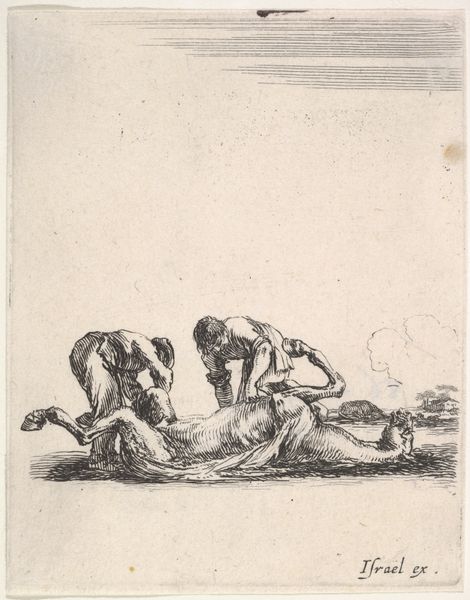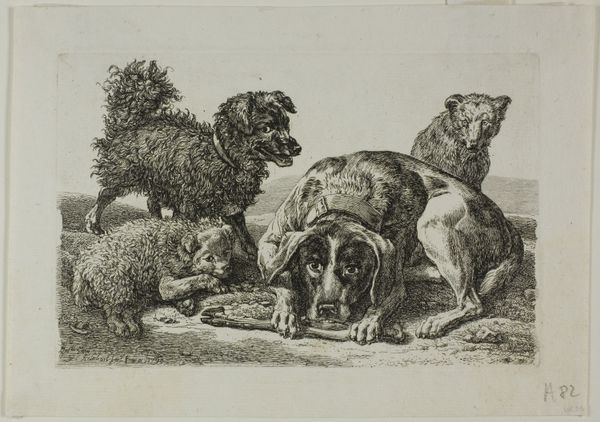
drawing, print, etching
#
portrait
#
drawing
#
ink drawing
# print
#
etching
#
human-figures
#
dog
#
landscape
#
figuration
#
genre-painting
Dimensions: sheet: 4 3/16 x 5 15/16 in. (10.6 x 15.1 cm)
Copyright: Public Domain
Curator: Here we have "Pleasures of Occupation," an etching created by Cornelis Bloemaert between 1610 and 1684, currently residing at The Metropolitan Museum of Art. Editor: My first thought is how relaxed this image feels! The figure is completely sprawled out beneath the tree. The high contrast of the ink drawing gives it a strong graphic quality. Curator: Indeed. Etchings like this one involved considerable labor, transforming a copper plate through acid etching before a print is even made. The widespread availability of prints such as this allowed imagery to be disseminated in unprecedented ways to all different social classes. Editor: And considering this piece probably found its way into homes across Europe, I wonder how audiences understood it. The hunting spoils alongside him suggest he's successful, and even has loyal canine companions. It’s a statement on the reward of hard work and then its accompanying leisure? Curator: I see it relating to broader themes in Dutch Golden Age art – the glorification of everyday life, yet tied inextricably to consumption. The hunting lifestyle feeds into the economy and cultural practice. What tools are necessary, and how many people did it take to get that rabbit on the table? The work romanticizes rural life, yet it is the result of skilled labor and material exploitation. Editor: It is interesting to think of this image finding itself not just on walls of burghers but also reproduced smaller and perhaps disseminated further afield. It's such a common image of leisure but looking closer through your eyes there’s much more layered beneath it. Curator: Precisely. The image itself becomes a commodity consumed by the burgeoning middle classes who would in turn engage with their own processes of extraction and creation. Editor: A point well made. Viewing through that lens reveals much about its socio-economic footprint and the impact the production of these items had on society. Curator: And looking closer has opened a window into the historical realities reflected within the artwork, and its own role within it.
Comments
No comments
Be the first to comment and join the conversation on the ultimate creative platform.
